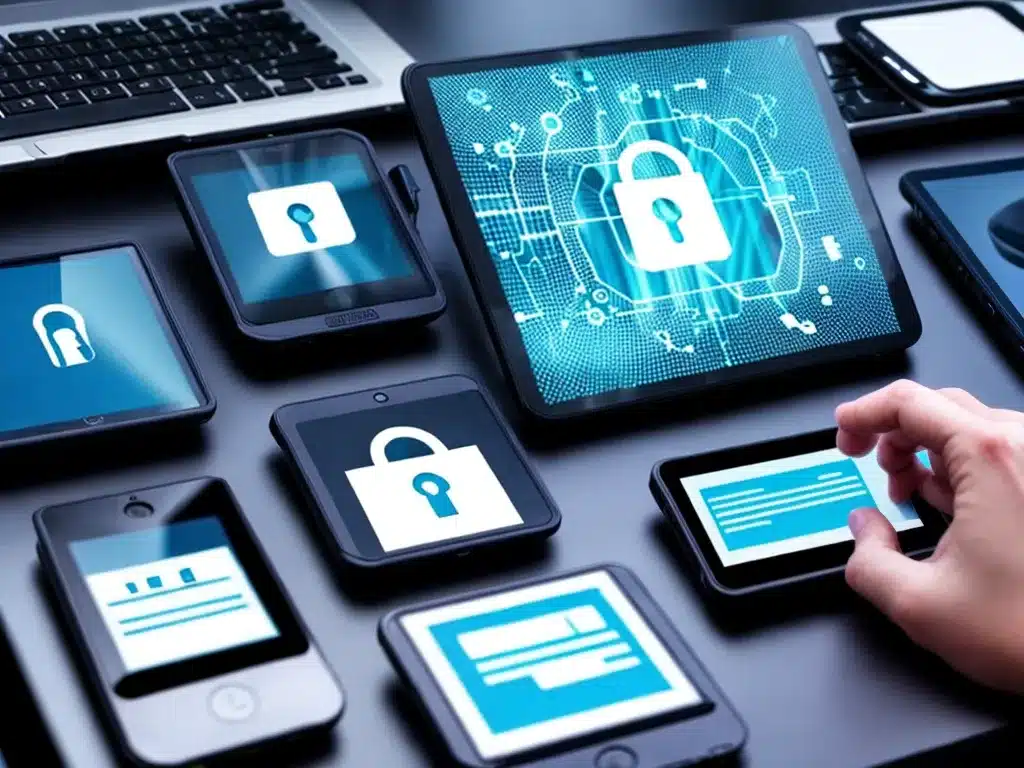
BYOD Security: Protecting Data on Employee Devices
Introduction
Bring your own device (BYOD) programs allow employees to use their personal devices like smartphones, tablets, and laptops for work purposes. This can improve productivity and job satisfaction. However, BYOD also introduces various security risks that must be addressed. In this article, I will provide an in-depth look at the security challenges of BYOD and best practices organizations can implement to keep data safe on employee devices.
Key BYOD Security Risks
Adopting BYOD creates several potential security vulnerabilities that could expose confidential corporate data. Here are some of the main risks:
Lack of Control Over Devices
Organizations don’t own employee devices so they have little control over configuration, security features enabled, apps installed etc. This makes it easier for attackers to exploit vulnerabilities. Employees may not have the latest OS and app updates installed that patch known security holes.
Malware Infections
Personal devices are more likely to get infected with malware since they don’t have enterprise-level anti-virus protections. These infections could spread within the corporate network when infected devices access company resources.
Unsecured Networks
Employees tend to connect their devices to unsecured public Wi-Fi networks outside the office. This allows cybercriminals to more easily intercept sensitive corporate data being transmitted on these networks.
Risky Apps
Employees may download risky apps full of vulnerabilities, malware, and weak encryption on their personal devices. When these devices access business networks and tools, the risky apps create backdoors for attackers.
Lack of Physical Security
Laptops, smartphones, and tablets used for work can be easily lost or stolen outside the workplace. This makes company data accessible to thieves if devices are not properly encrypted.
Noncompliant Behaviors
Employees may intentionally or accidentally engage in noncompliant practices, like disabling security features, that put corporate data at risk on their personal devices.
Best Practices for BYOD Security
While the risks are real, organizations can take steps to secure BYOD effectively:
Have a BYOD Policy
Craft a detailed BYOD policy covering employee eligibility, approved/prohibited device types, required device protections, acceptable usage, privacy expectations, and disciplinary actions for violations. This sets clear security expectations.
Require Device Encryption
Mandate employees encrypt device hard drives to prevent unauthorized access to company data if devices are lost or stolen. Encryption keeps sensitive data protected.
Install Mobile Device Management (MDM)
Install MDM software on all BYOD devices. This allows centralized management of mobile devices and applies containerization to segregate personal data from corporate data. MDM tools can remotely wipe company data.
Enable Remote Lock/Wipe
Have capabilities in place to remotely lock down devices or wipe company data if devices are lost or employees leave the organization. This secures data in these scenarios.
Restrict Access
Only provide BYOD devices access to the resources and data employees need to do their jobs; block access broadly. This limits damage if devices get compromised.
Require Strong Authentication
Use multi-factor authentication and/or complex password policies for all systems and tools employees access via BYOD devices. This prevents unauthorized access.
Limit Public Wi-Fi
Establish a policy prohibiting employees from accessing corporate networks and data over unsecured public Wi-Fi networks to avoid man-in-the-middle attacks stealing data.
Install Anti-Malware
Ensure anti-virus, anti-malware, and firewall software is installed on all BYOD devices to prevent infections and block against known cyberthreats.
Apply OS/App Patches
Set policies requiring employees keep devices up-to-date with the latest OS and app updates to ensure known vulnerabilities are patched.
Educate Employees
Train employees on BYOD best practices for keeping devices secure like encrypting data, setting strong passwords, recognising threats, and reporting issues. Cybersecure behaviors are critical.
Key Takeaways
BYOD elevates numerous data security risks, but following best practices like encryption, MDM software, restrictive access, multi-factor authentication, anti-malware protections, and employee education enables organizations to protect corporate data on employee-owned devices. Companies must shift mindsets and budgets to adequately secure BYOD programs. With proper diligence, companies can safely embrace the productivity benefits of BYOD without sacrificing data security.












